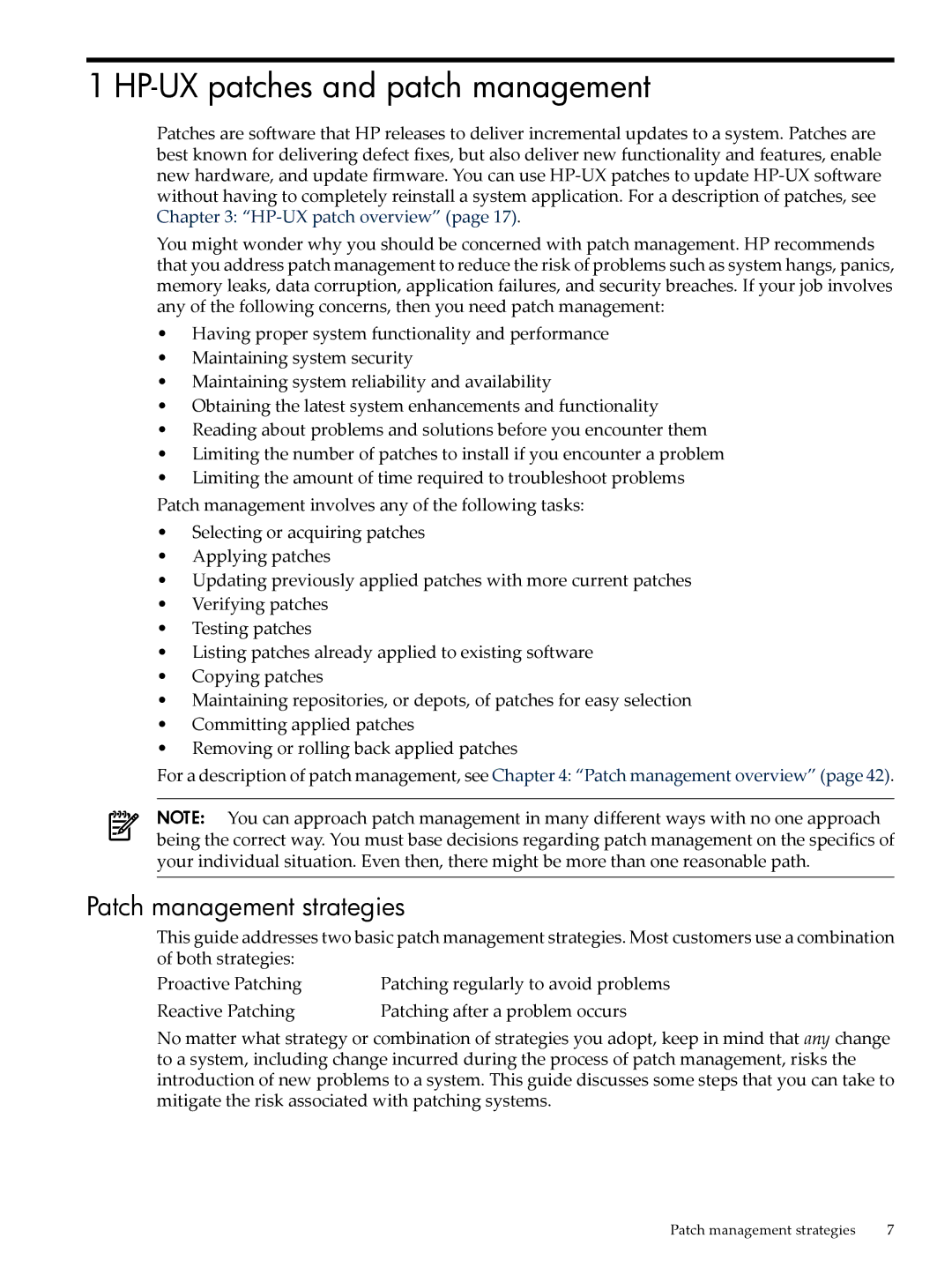
1 HP-UX patches and patch management
Patches are software that HP releases to deliver incremental updates to a system. Patches are best known for delivering defect fixes, but also deliver new functionality and features, enable new hardware, and update firmware. You can use
You might wonder why you should be concerned with patch management. HP recommends that you address patch management to reduce the risk of problems such as system hangs, panics, memory leaks, data corruption, application failures, and security breaches. If your job involves any of the following concerns, then you need patch management:
•Having proper system functionality and performance
•Maintaining system security
•Maintaining system reliability and availability
•Obtaining the latest system enhancements and functionality
•Reading about problems and solutions before you encounter them
•Limiting the number of patches to install if you encounter a problem
•Limiting the amount of time required to troubleshoot problems
Patch management involves any of the following tasks:
•Selecting or acquiring patches
•Applying patches
•Updating previously applied patches with more current patches
•Verifying patches
•Testing patches
•Listing patches already applied to existing software
•Copying patches
•Maintaining repositories, or depots, of patches for easy selection
•Committing applied patches
•Removing or rolling back applied patches
For a description of patch management, see Chapter 4: “Patch management overview” (page 42).
NOTE: You can approach patch management in many different ways with no one approach being the correct way. You must base decisions regarding patch management on the specifics of your individual situation. Even then, there might be more than one reasonable path.
Patch management strategies
This guide addresses two basic patch management strategies. Most customers use a combination of both strategies:
Proactive Patching | Patching regularly to avoid problems |
Reactive Patching | Patching after a problem occurs |
No matter what strategy or combination of strategies you adopt, keep in mind that any change to a system, including change incurred during the process of patch management, risks the introduction of new problems to a system. This guide discusses some steps that you can take to mitigate the risk associated with patching systems.
Patch management strategies | 7 |
